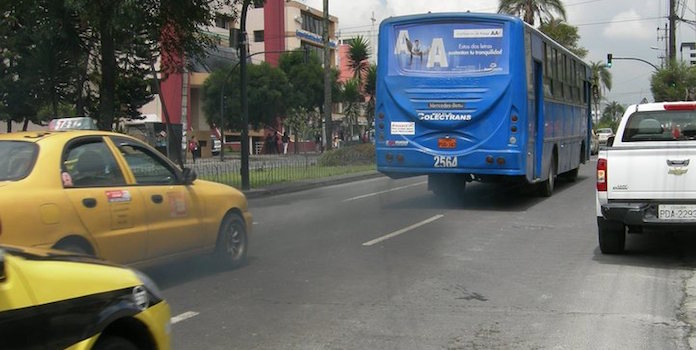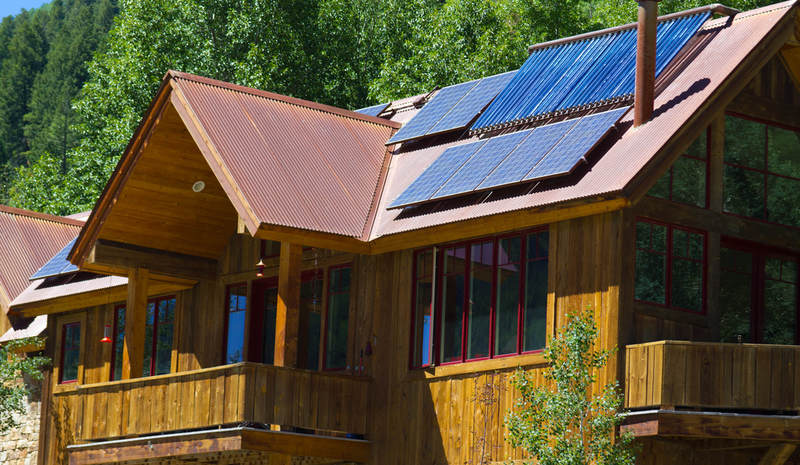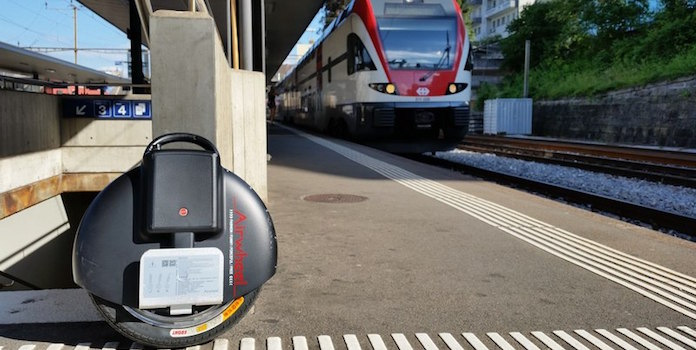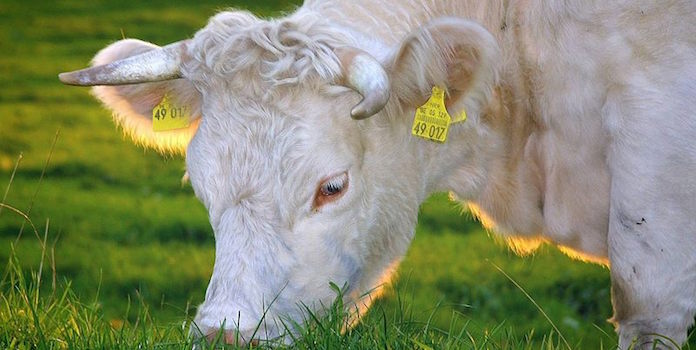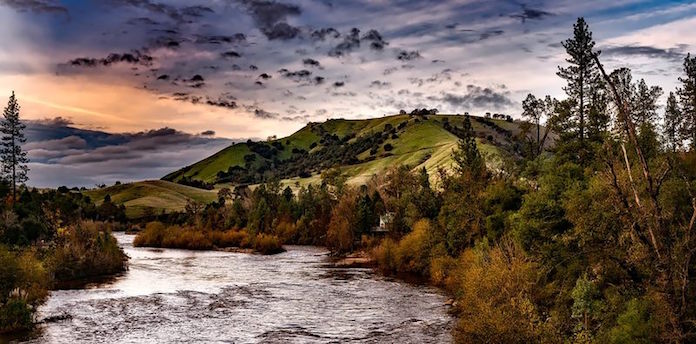How to Stop Global Warming – Ways We Can All Help

Practical tips for all of us to reduce climate change
To figure out how to stop global warming, we need to focus less on a singular solution and more on ways that every person can contribute to a better planet. However, many of us are unsure what we can do on a daily basis to make things better. Sure, we can be more energy conscious, recycle our soda cans and cardboard, and drive our cars around less. But is that it? What else can we do to reduce climate change?
How much can our individual actions really change what’s happening to our environment? I’ll explore the massive topic of climate change, the truth about what’s causing it, and what we each can do in various areas of our life to mitigate our respective impacts.
What is global warming?
For years there were disagreements over the legitimacy of global warming, also known as climate change. Some of those conversations still exist today. Luckily for the environment, the central focus of most discussions on climate change today has turned from doubts over its existence to seeking answers (sometimes very interesting answers) on how to stop global warming.
The basic principle of global warming is this: The earth’s overall temperature is rising due to human-induced pollution, which can be easily seen in the temperature records collected over the past 150 years. NASA has confirmed that the earth’s average temperature has increased more than 0.99° C within the past century. That number is even higher in some parts of Antartica.
Okay, the earth is warming, but doesn’t the earth’s temperature rise and lower naturally? Are we sure it was us humans that caused this latest increase? What proof do we have?
Well, imagine that the history of the globe was condensed into 24 hours. The first human activity would appear roughly 3 minutes before midnight, and our modern civilization would pop up about 30 seconds before the entire day’s end.
And yet, in such a short amount of time, our activity in that last 30 seconds of the earth’s existence has risen the temperature more than 1 degree C, at a faster rate than we can account for with earth’s natural processes (basically, if humans didn’t exist, the earth wouldn’t have warmed up so quickly). We have disrupted the global atmosphere more in 30 seconds than the previous 23 hours, 59 minutes and 30 seconds.
How’d we cause this temperature increase?
The earth’s atmosphere is a mixture of gases, some of which are greenhouse gases. These gases trap heat from the sun and warm the earth to a temperature where we can comfortably live. Water vapor and carbon dioxide naturally cycle between the atmosphere, the ocean, and the earth’s terrain. This is a normal sequence of the earth’s existence that has been ongoing for more than one billion years.
But 150 years ago, when humans began burning fossil fuels (coal, oil, and natural gas) to power our various creations, we began to disrupt that natural cycle. When we burn fossil fuels that emit carbon, it mixes with oxygen to create carbon dioxide, C02, which messes with the natural cycle of the earth and, by extension, temperature.
The volume of greenhouse gases that were keeping our earth a warm, livable place has increased dramatically over a very small period of time (the above-mentioned 30 seconds). Heat is trapped in the earth’s atmosphere, warming it to unprecedented temperatures and prompting climate scientists to warn us that reducing carbon emissions is imperative to keep Earth within a livable temperature for life.
There are other pollutants that contribute to global warming, like Methane (CH4), Nitrous Oxide (N2O), and Halocarbons (or CFCs), but CO2 contributes to more than 75 percent of the impact of human greenhouse-gas emissions.
Since the very first Earth Day in 1970, the amount of CO2 in the atmosphere has risen almost 25 percent. While we don’t know exactly how long it takes for carbon dioxide to leave our atmosphere, we do know it is not a quick process.
A study by Stanford found that 65-80% of carbon dioxide released into the air is dissolved in the ocean over a period of 20-200 years. The remaining CO2 can take literally thousands of years to be removed through processes like chemical weathering and rock formation. Unfortunately, our pollution levels are not just affecting us, they will also impact generations of humans for centuries to come.
So why is 2 degrees Celsius our limit?
You may be thinking, “We’ve only changed the temperature by 1 degree Celsius! How much is 1 degree? Is it really enough to mess everything up?” Actually, yes. And a two degree Celsius rise in global temperature could easily wipe out 30% of the world’s species. If you’d like to read more about why just a two degree difference is a concern for countries across the globe, check out our piece on the Paris Agreement.
I’m just one person, how can I stop global warming?
The scientifically proven consequences of climate change, i.e., severe droughts, heat waves, coastal flooding, etc., are indiscriminate. They affect anyone in their path. We are all at risk and we all can do more than we think to change the outcome of our plant.
Below is a list of mitigating actions we can take to lessen our human-impact on the earth.
Home life

Let’s start by talking about easy steps you can take in your own home.
Go solar!
It is no secret that renewable energy is one of the biggest keys to fighting global climate change. Installing solar rooftop panels or choosing to purchase your electricity from a renewable energy source has large benefits in the fight against global warming.
Installing a residential solar panel system has the potential to reduce a home’s carbon dioxide emissions by 80 percent (pg. 1). Multiply that by the nearly 126 million households in the US, and we would be well on our way to creating a much cleaner atmosphere.
Recycle
This is an easy one, and something most of us are already doing. The average US family consumes over 350 gallons of different beverages per year. Can you imagine how many plastic bottles, cartons, and containers that is? Now add to that all the packaging that comes with the food you buy and the products you purchase — and it starts to become a pretty big problem.
It is possible, however, to save up to 2,400 pounds of carbon dioxide annually just by recycling, at the very least, half of your household waste. You can sort your garbage correctly, bring your own bags to the grocery store, and reuse old packaging for different purposes — the list goes on and on. Added benefit: the recycling sector creates more than 1 million US jobs!
Change your light bulbs
This is a quick and easy, but extremely effective change you can make to reduce your personal creation of pollutants. Every 5 incandescent light bulbs you swap out for either light emitting diodes (LEDs) or compact fluorescent light bulbs (CFLs) will save you roughly $200 dollars per year and use 75 percent less energy. That’s a major impact for a small switch.
Use less hot water
Don’t worry, you don’t have to give up showering. There are other small ways to save on hot water consumption around the house that will leave a bigger impact than reducing your shower time.
- Did you know that your clothes washer uses an average of 2.5 times more water than what you use to shower? So when you wash a load of clothes, make sure the machine is full or use a smaller load setting. Wash your clothes with cold or warm water instead of hot so you aren’t using energy to heat the water.
- Also, think about using a drying rack to air dry your clothes instead of always opting for the dryer — that’s how the majority of Europe does it. For this (and other reasons), Europeans generate an average of 50 percent less carbon dioxide than Americans.
- Wait to run your dishwasher until it’s full. Also, let your dishwasher air dry instead of heat-dry, reducing water and electricity consumption. Many dishwashers also have an option to turn the heat down from 140° Fahrenheit to 120°. Choose the slightly cooler option for savings on your energy bill!
- Wrap your water heater in an insulation blanket if it’s not already insulated. This is a cheap and easy improvement that will save you money both on heating and hot water. Some utility companies may even offer you a rebate or a discount on your blanket!
Use less heating and air conditioning
There are a host of ways to find natural alternatives to controlling your home’s temperature with a thermostat. Here are some suggestions to improve heating and cooling your home while lowering your electricity bill:
- Insulate your walls, floors, and attics – especially important with older buildings.
- Seal air leaks with caulk to prevent outside air from getting in. According to the Department of Energy, this cheap fix can save up to 20% of your energy consumption.
- Close your blinds during summer.
- Turn on your ceiling fans instead of the AC.
- Maintain or grow trees near your house that offer natural shade from the sun.
- Close the vents in rooms that you don’t spend very much time in.
- As you leave your house for the day, set your thermostat down a bit in winter and up a bit in summer. This can save literally thousands of pounds of carbon dioxide per year.
You can also look into purchasing a smart thermostat like a Nest, which automatically turns the heat down when you’re out of the house or sleeping, and on again when you return or wake up. Its official website says that it can pay for itself in 2 years, thanks to the energy savings it helps create.
Turn off the lights!
This one also seems a bit obvious, but you probably don’t notice how often you leave the lights on when there is little use for them. I know I am guilty of this.
Did you know, if we all turned off 2 lights in our house for one hour per day, we would save more than 5 million kilowatts of electricity nationally? That would free us from using quite a bit of coal. In fact, it would save enough coal to fill up the Empire State Building three times over. So the next time you sit down to watch a movie, flick the lights off. You’ll enjoy the show and the electricity bill savings!
Ask for a report card from your utility company
Knowledge is power! Seeing which appliances are consuming the most energy (and at what time of day) can be a big help in lowering your electricity consumption. Did you know that some utility companies offer free home energy audits to help customers identify which appliances can be upgraded for energy-efficiency?
A good rule of thumb is to stick to household appliances with an ENERGY STAR label, which means they have met requirements set by the Environmental Protection Agency for energy efficient products.
Transportation

We’ve covered the home, so now let’s see what we can do to lower our transportation emissions.
Drive less
Cars are giant emitters of carbon dioxide. In 2014, the average American household had 2.09 cars. The US makes up 30 percent of the globe’s automobiles, but it creates about 50 percent of the world’s car emissions. You know all that exhaust we see coming out of tailpipes? It contributes to nearly 30 percent of all America’s smog.
If we can reduce our car usage, we can improve the environment dramatically. Options for curbing your driving habits include:
- Moving closer to your place of work. Moving may seem like a pain, but imagine how much time and money (and pollution) you could save if you shortened your commute.
- Using nonpolluting transportation like bicycles, electric scooters, even roller skates!
- Taking public transit.
- Carpooling with friends.
- Choosing off-peak hours to drive: see what errands you can plan to do outside of the most popular transport hours. You’ll avoid traffic, wasted gas, and probably road rage.
- Telecommuting. Ask your boss about the possibility of working from home a few days a week. Even one day makes a difference!
- Combining errands into one trip instead of taking several different trips to and from your residence. Additionally, when online shopping, group purchases together and get all of your deliveries at once to decrease your driving as well as shipping demands (and lower your fees).
Driving efficiently
Of course, you still have to drive sometimes. You can decrease your emissions when driving by:
- Going easy on both the gas and the brakes saves on gas consumption.
- Conducting routine maintenance checks on your car.
- Using cruise control.
- Removing excess weight from your car. Got a bunch of boxes in the your trunk? Take them out and watch your gas mileage go further with a lighter vehicle.
- Avoid excess idling. It’s always easier on your gas tank (and the environment) to turn your car off, even temporarily.
- Purchasing a full-hybrid or an electrically powered vehicle. Some models are the exact same price as their traditional counterparts, and get WAY more miles to the gallon! Check out our article on the differences between hybrids, PHEVs, and purely electric cars.
Fly less
Globetrotting is tons of fun, but in reality, flying contributes roughly a quarter of the average person’s carbon footprint per year.
Let’s look at some quick numbers: one round-trip flight from the west to the east coast of the United States will create a warming effect equal to roughly 2 to 3 tons of carbon dioxide per person. The average American generates about 19 tons of CO2 per year. That means taking a cross-country flight once per season would make up half of your average emissions, without taking into consideration what you do at home or how often you drive.
The harsh impact that airplanes have on the planet is due to the something called the ‘aviation multiplier’. Airplanes emit carbon dioxide directly into the upper atmosphere instead of at ground level, causing roughly twice as much damage to the atmosphere. Yikes!
So what’s the alternative? In general, opting for a train instead of a plane will significantly reduce your carbon footprint by a factor of up to 10, depending on the length of the trip and type of train. In general, short distance flights are more polluting per passenger than long ones. Thus, if you are not traveling very far, ride the rails instead!
Food
Agriculture is a massive contributor to our climate change problem, accounting for more than 15 percent of all greenhouse gas emissions.
Avoid food waste
30-40% of all food created globally is thrown away. Organic waste (like rotten food) sits in landfills and creates methane as it decomposes, polluting the environment. What’s more, the Food and Agriculture Organization estimated that the cost to producers of food waste is currently $750 billion annually, excluding fish and seafood. Talk about a lot of waste!
Eat less meat
The largest portion of greenhouse gas emissions created during food production comes from meat. This doesn’t mean you need to become a vegetarian tomorrow (for the record, I am a meat eater), but eating less meat can make a major difference in the fight against climate change.
Meat production consumes massive amounts of our globe’s natural resources, especially red meat. For example, beef production (pg 1) requires 160 times more land and creates 11 times more carbon emissions than potatoes, wheat, or rice. That’s a lot.
But that’s not the end of the meat story. Not only does meat use our resources and emit carbon dioxide, but red meat production also produces a lot of methane. The average cow raised in North America produces 117 pounds of methane per year while digesting grass, something pigs and chickens don’t do. Methane has 25 times as much global warming potential as carbon dioxide. So, next time you think about ordering a steak, consider your alternatives.
Eat local
The average fresh food dish travels roughly 1,500 miles to arrive on your plate. Buying local products eliminates a lot of gas-guzzling and pollution that results from food transportation.
This also applies to products in general, not just food. One study found that between 2007-2012, global shipping made up 3.1% of total carbon dioxide emissions. It may not seem like much, but under a business-as-usual scenario, this number could more than double over the next three decades.
How to stop global warming 
Climate change affects every sector of business, every country, and every ethnicity. It may seem like the impacts are in the far-reaching future, but in reality, we are already seeing the negative effects in various parts of the world.
While we can’t undo the past, we can make changes to avoid future damage for our near, medium, and long-term future. If everyone does their part, we can certainly slow down — if not stop — global warming.
Please let us know if you have any other creative ideas on how to stop global warming in the comments below.
Image Credits under CC License via Pixabay – 1, 2, 3, 5, 6, 7 & Flickr – 4

